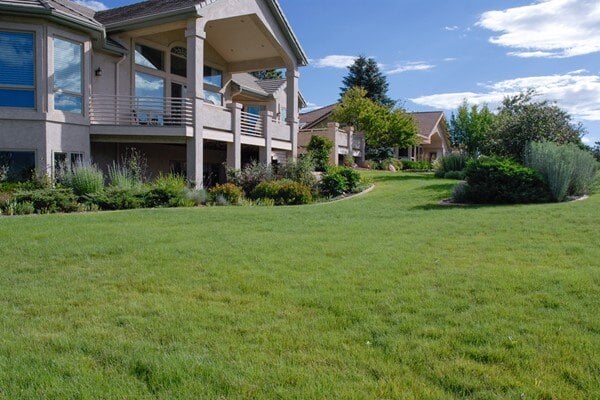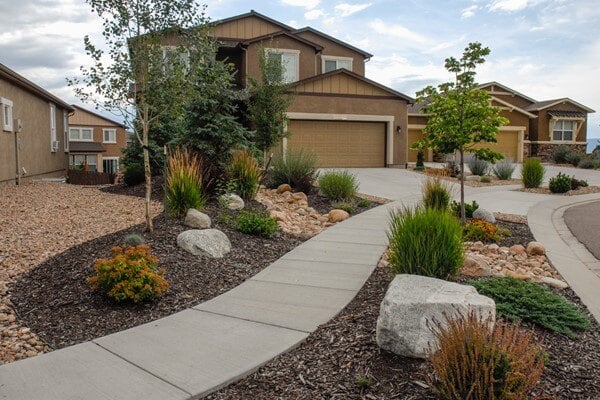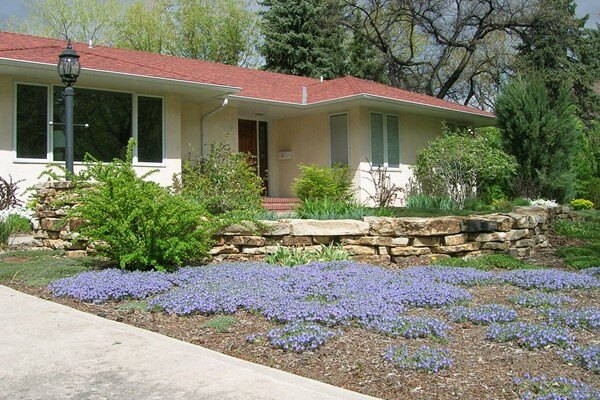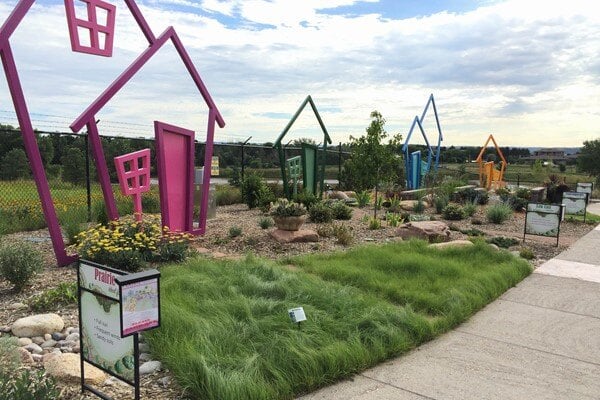Blue Chip Creeping Juniper
Blue chip juniper is a low-growing evergreen shrub, making it very suitable as a groundcover. The scales are a steel-blue color in the summer. In winter, they take on a purplish tinge.
Blue chip juniper is valued for its adaptability to sandy and rocky soils as well as hot, dry locations. Because of these qualities, it is often used as a groundcover or to retain slopes.
It can be wonderful addition to home landscapes in the Colorado Springs area but should not be planted in areas at risk for wildfire.
.jpg)
.jpg)
Blue Chip Creeping Juniper
Blue chip juniper is a low-growing evergreen shrub, making it very suitable as a groundcover. The scales are a steel-blue color in the summer. In winter, they take on a purplish tinge.
Blue chip juniper is valued for its adaptability to sandy and rocky soils as well as hot, dry locations. Because of these qualities, it is often used as a groundcover or to retain slopes.
It can be wonderful addition to home landscapes in the Colorado Springs area but should not be planted in areas at risk for wildfire.
Plant details
Botanic Name
Juniperus horizontalis 'Blue Chip'
Pronunciation
jew-NIP-er-us hor-ih-zon-TAL-is
Mature Height
10 to 12 in.
Mature Spread
6 to 8 ft.
Water usage
One Droplet: Water twice per month or less, once established.
Two Droplets: Water about once per week, once established.
Three Droplets: Water about twice per week, once established.
Flower Color
negligible
Bloom time
inconspicuous
Colorado Native
No
Natural Habitat
species is native to North America
Light Requirements
sun
Cold Hardiness
USDA zones 3-9
Elevation Limit
hardy to 7,000 ft.
Performance
The blue chip junipers at the Water Wise Demonstration Garden are healthy and beautiful specimens. Individual branches sometimes die back due to vole damage, but they are easily pruned out in spring.
Maintenance
Blue chip junipers require little water or maintenance after establishment. Watering once per month during the winter will help to prevent spider mites, which are an occasional problem.
Plant blue chip juniper in an area where they are able to spread without covering pathways or sidewalks.
See in a landscape
This large backyard backs up to a golf course and was previously over 3000sqft of Kentucky bluegrass. Since the backyard received little use, the high water-using bluegrass was converted to Colorado's state grass, Blue grama, and saves about 60% of the water. Many of the plants in this landscape are xeric plants that compliment this native turf well and fit right into the surrounding Colorado backdrop.
This front yard gets creative with landscaping without bluegrass. The dry streambed and various mulch areas help break up large spaces and create areas to leave unplanted and other areas to plant. The plants in this landscape are trees, shrubs and ornamental grasses that need very little maintenance and only a few flowering perennials that need a little more maintenance. This yard creates a unified look by repeating mulch and plants on both sides of the driveway and the parkway, giving this mountain xeriscape a complete look.
After removing the existing bluegrass, flowering ground covers were planted that use less water than a traditional lawn and without all the, mowing, trimming and fertilizing. As the plants mature, they will grow only a few inches tall and about 1-1.5 feet wide to cover the entire soil surface. This type of landscaping may be watered with drip pipe that has the emitters built into it (in-line drip), or efficient overhead spray nozzles that are set less frequently than for bluegrass as these plants like to dry out between watering. Make sure to water a groundcover lawn once a month in the winter to make sure these plants are healthy and ready to grow in spring.




.jpeg)
.jpeg)
.jpeg)
.jpeg)
.jpeg)
.jpeg)
.jpeg)
.jpeg)
.jpeg)
.jpeg)